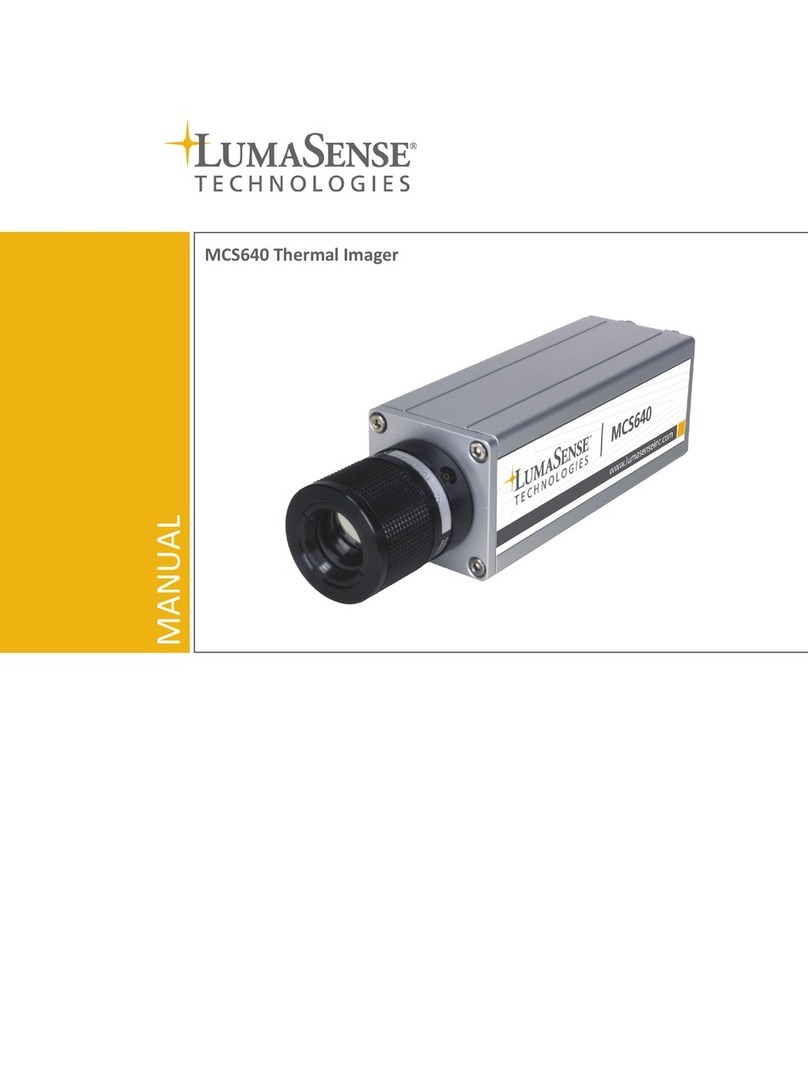MCL640 Manual General Information ∂6
1.3 Regulatory Information
This section describes how the Infrared camera complies with regulations in certain regions. Any
modifications to the Infrared camera not expressly approved by the manufacturer could void the
authority to operate the Infrared camera in these regions.
USA
This infrared camera generates, uses, and can radiate radio frequency energy that may interfere
with radio and television reception. The Infrared camera complies with the limits for a Class B
digital device used exclusively as industrial or commercial test equipment, pursuant to Part 15
Subpart B Sec. 15.103 c. of the FCC Rules.
These limits are designed to provide reasonable protection against harmful interference.
However, there is no guarantee that interference will not occur in a particular installation.
This camera is prohibited to be resold, loaned or taken out of the USA unless an
export license has been obtained from the US Department of Commerce.
Any violation can result in severe criminal penalties.
The 9 Hz version of the MCL640L and MCL640LHT are classified by the United States Department of
Commerce as 6A993 as it is eligible for the Technical Note 3(a) carveout under 6A003. The 50 Hz
version of the MCL640L and MCL640HT are classified as 6A003.b.4.
1.3.1 General conditions of operation
Persons operating intentional or unintentional radiators shall not be deemed to have any vested
or recognizable right to continued use of any given frequency by virtue of prior registration or
certification of equipment, or, for power line carrier systems, on the basis of prior notification of
use pursuant to Sec. 90.63(g) of this chapter.
Operation of an intentional, unintentional, or incidental radiator is subject to the conditions
that no harmful interference is caused and that interference must be accepted that may be
caused by the operation of an authorized radio station, by another intentional or unintentional
radiator, by industrial, scientific and medical (ISM) equipment, or by an incidental radiator.
The operator of a radio frequency device shall be required to cease operating the device upon
notification by a Commission representative that the device is causing harmful interference.
Operation shall not resume until the condition causing the harmful interference has been
corrected.
1.4 Limit of liability and warranty
All general information and notes for handling, maintenance and cleaning of this instrument
are offered according to the best of our knowledge and experience.
All thermal imagers from LumaSense Technologies have a regionally effective warranty period.
Please check our website at http://info.lumasenseinc.com/warranty for up-to-date warranty
information. This warranty covers manufacturing defects and faults which arise during
operation, only if they are the result of defects caused by LumaSense Technologies.
The warranty is VOID if the instrument is disassembled, tampered with, altered, or otherwise
damaged without prior written consent from LumaSense Technologies; or if considered by
LumaSense Technologies to be abused or used in abnormal conditions.
The Windows compatible software was thoroughly tested on a wide range of Windows
operating systems and in several world languages. Nevertheless, there is always a possibility that
a Windows or PC configuration or some other unforeseen condition exists that would cause the
software not to run smoothly. The manufacturer assumes no responsibility or liability and will
not guarantee the performance of the software. Liability regarding any direct or indirect
damage caused by this software is excluded.





























